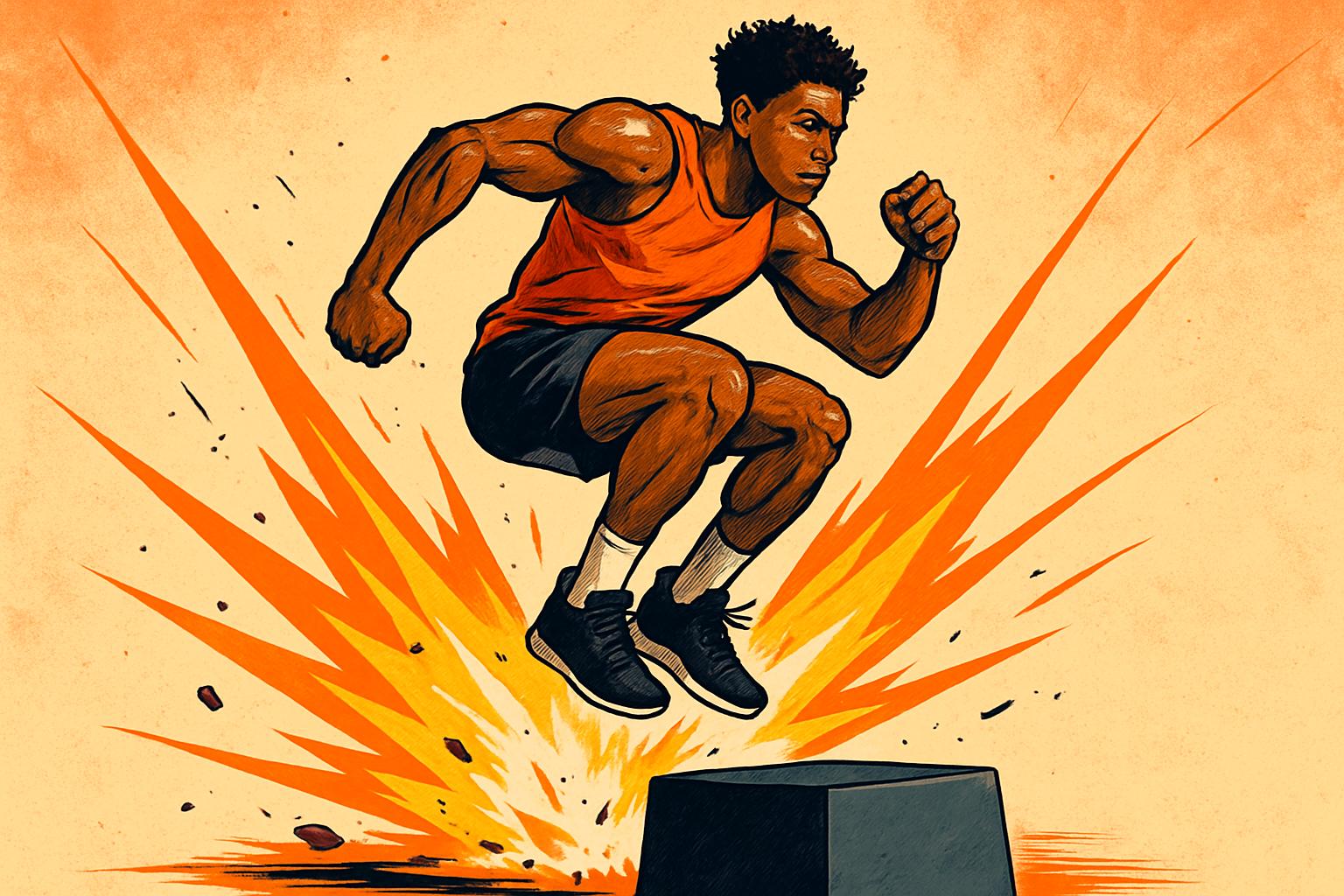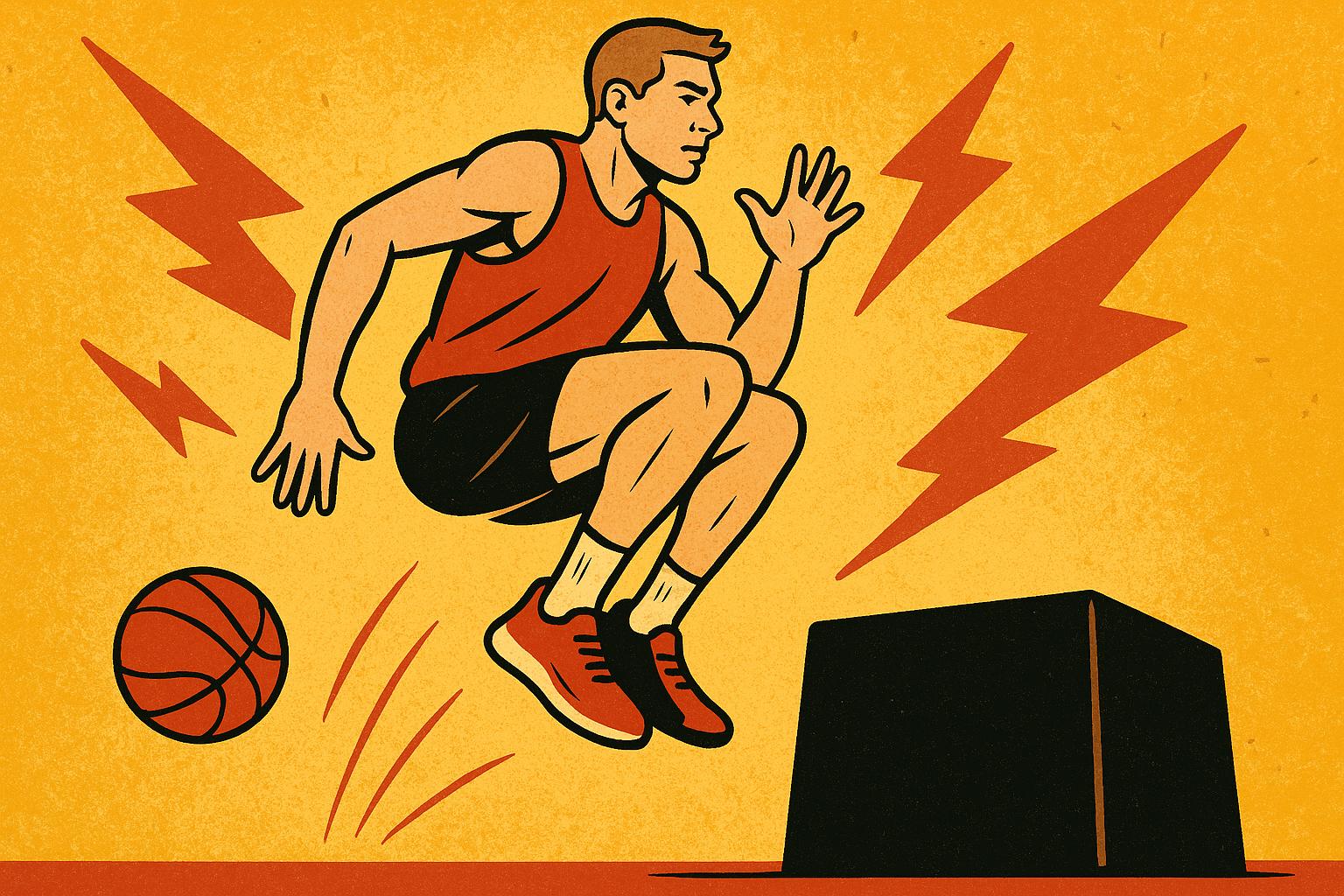Unleashing Explosive Power: How to Build Explosive Leg Power for Better Jumps
When it comes to improving your vertical jump, the key lies in developing explosive leg power. Whether you’re aiming for that perfect dunk in basketball, a powerful spike in volleyball, or simply improving your overall athleticism, explosive leg power is essential for taking your jumps to the next level. The ability to generate force quickly is what separates an average jumper from an elite one, and the good news is that you can train to develop that explosive power.
In this article, we’ll explore how to build explosive leg power through various strength and plyometric exercises, focusing on key movements that target the muscles responsible for jumping. We’ll break down the process of strengthening and conditioning your legs, as well as improving speed and reaction time to unlock your full jumping potential.
Understanding Explosive Leg Power: The Foundation of a Strong Jump
Before diving into the exercises, it’s important to understand what explosive leg power really means and how it impacts your jumping ability. Explosive power refers to the ability to generate maximum force in the shortest amount of time. This is crucial for jumps, as you need to rapidly exert force to propel your body upwards.
Your legs, specifically the quadriceps, hamstrings, calves, and glutes, play the most significant role in generating force during a jump. When you squat down in preparation for a jump, you’re essentially storing energy in these muscles. The more powerful and fast your legs are at releasing that energy, the higher you will jump. Developing explosive power is a combination of increasing strength, improving muscle elasticity, and training your body to react quickly and efficiently.
Strengthen the Foundations: Building Leg Strength for Explosive Power
The first step in building explosive leg power is to develop the foundational strength of the muscles involved in jumping. Strength provides the base from which you can generate maximum force. Without strength, you’ll lack the muscle power needed for an explosive jump.
Start by incorporating compound leg exercises into your workout routine. These exercises work multiple muscle groups simultaneously, which helps build the strength necessary for powerful jumps. Squats are one of the best exercises for building leg strength. The squat targets your quads, hamstrings, glutes, and calves, making it a full lower-body workout. Perform squats with progressively heavier weights to build muscle mass and power.
Another great exercise for building strength is the deadlift. Deadlifts primarily target your hamstrings, glutes, and lower back—muscles that play a crucial role in jumping power. The deadlift helps you develop the posterior chain, which is responsible for producing force during takeoff.
Additionally, lunges are fantastic for single-leg strength and stability. Lunges engage both your glutes and quads while working on balance and coordination. Single-leg exercises like lunges help mimic the motion of jumping, where one leg typically bears more of the load than the other.
Calf raises are another essential exercise to include in your training. Explosive jumps rely on your calves to push off the ground, and strengthening your calves will improve your push-off and overall jump height. Perform calf raises with weights to increase intensity and further build strength.
As you develop strength through these exercises, make sure to progressively increase the resistance to continue challenging your muscles. Over time, this will lead to better force generation, which is the basis for explosive jumping power.
Plyometrics: Training for Explosive Power and Speed
Once you’ve built a solid foundation of strength, the next step is to incorporate plyometrics into your training. Plyometric exercises are designed to increase explosive power by training your muscles to rapidly stretch and contract, mimicking the movements involved in jumping.
Plyometric exercises focus on the stretch-shortening cycle (SSC), which involves a muscle being rapidly stretched (eccentric phase) and then immediately contracting (concentric phase) to produce power. This cycle is what enables quick, explosive movements like jumping. Plyometrics are essential for improving your ability to produce force quickly, which directly translates into a higher jump.
One of the most effective plyometric exercises for building explosive leg power is the box jump. Stand in front of a sturdy box and perform a squat before explosively jumping onto the box. Box jumps target your quads, glutes, and calves while training your body to generate maximum force quickly. To make the exercise more challenging, you can increase the height of the box over time or perform depth jumps.
Another excellent plyometric drill is the depth jump. Start by stepping off a platform or box and landing on both feet. Upon landing, immediately explode upwards into a jump. The goal of the depth jump is to reduce the amount of time spent on the ground and react as quickly as possible. This helps improve your ability to absorb force and then explode into another jump—critical for athletes who need to react quickly after landing.
The broad jump, or standing long jump, is another great drill for developing explosive power. Stand with your feet shoulder-width apart, squat down slightly, and jump as far forward as possible. This drill not only improves your vertical leap but also builds horizontal power, which can contribute to more powerful jumps overall.
Lastly, tuck jumps are a great way to improve vertical power while focusing on speed. In a tuck jump, you explosively jump upward and bring your knees toward your chest while in the air. Focus on maximum height and quick transitions between jumps.
Plyometric exercises like these will train your body to react quickly and produce power in a short amount of time, which is the key to improving your vertical jump.
Improving Speed and Agility: React Faster for Better Jumps
Explosive power isn’t just about how strong your muscles are; it’s also about how quickly your body can react and apply force. In sports, where timing and quick movements are essential, improving your reaction time and agility can help you jump higher and more efficiently.
To improve your agility and reaction time, incorporate agility drills into your training routine. Ladder drills, cone drills, and shuttle sprints are all excellent exercises for enhancing speed and footwork. These drills train your muscles to react quickly, helping you explode into your jump faster.
Lateral movements, such as skater jumps or side-to-side shuffles, also improve your agility and power in lateral jumps. Training in multiple directions—up, down, and side to side—helps develop overall explosiveness and coordination, which will improve your jumping ability in all situations.
Sprints are another great way to improve speed and overall explosiveness. Sprinting requires quick bursts of energy, which trains your muscles to fire rapidly, similar to the quick reaction needed for jumping. Include sprints in your routine to improve your overall jumping efficiency.
Stretching and Flexibility: Increase Range of Motion for Better Power Transfer
Flexibility and mobility are often overlooked when it comes to jump training, but they play an important role in increasing your vertical jump. A lack of flexibility can limit your range of motion and prevent you from utilizing your muscles fully during takeoff.
Incorporating dynamic stretching into your warm-up routine is a great way to prepare your muscles for explosive movement. Leg swings, hip openers, and lunges are excellent dynamic stretches that help loosen up the muscles involved in jumping. These movements increase the range of motion in your hips and legs, allowing you to move more freely and efficiently.
Static stretching after your workout helps improve flexibility, preventing tightness and reducing the risk of injury. Focus on stretching your quads, hamstrings, calves, and hip flexors, as these muscles are most engaged during a jump.
Nutrition and Recovery: Fuel Your Jumps
Building explosive leg power isn’t just about training; it’s also about recovery and fueling your body properly. After intense workouts, your muscles need time to repair and grow. Getting enough rest, sleep, and proper nutrition is essential for muscle recovery and strength development.
Protein is essential for muscle repair, so make sure you’re consuming enough lean protein sources like chicken, fish, and beans. Carbohydrates are also crucial for providing energy during high-intensity workouts, while healthy fats help support joint health and overall performance. Hydration is just as important—drink plenty of water to keep your muscles functioning at their best.
Sleep is another critical component of recovery. Aim for 7-9 hours of quality sleep each night to allow your body to recover and rebuild. Proper recovery helps ensure that your muscles are ready for the next training session and allows you to continually improve your jumping power.
Your Roadmap to Explosive Leg Power
Building explosive leg power takes time, dedication, and the right approach. By incorporating strength training, plyometrics, speed drills, and flexibility work into your routine, you’ll build the power and speed necessary for higher jumps. With consistent effort and smart recovery practices, you’ll unlock your full potential as an athlete and improve your jumping ability.
Stay patient, stay focused, and enjoy the process. As you continue to work hard and push yourself, you’ll see progress and start to notice improvements in your jumps. Keep striving for better, and soon enough, you’ll reach new heights—literally!




